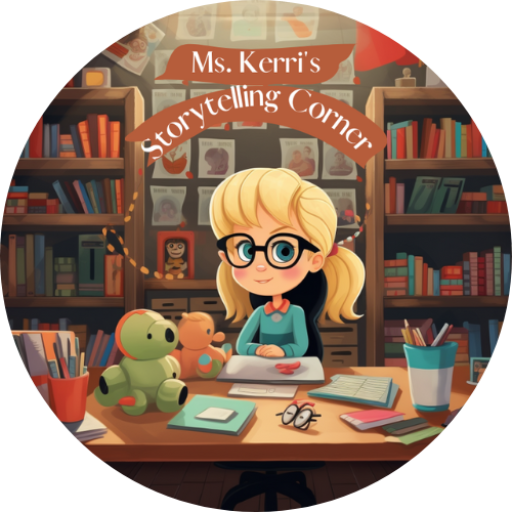Encouraging independent play in preschoolers is essential for their development. It helps them build confidence, creativity, and problem-solving skills. This article will explore practical strategies to foster independent play, creating an environment where children can thrive on their own.
Key Takeaways
- Create a safe and inviting play area where children can explore freely.
- Choose toys that match their age and interests to keep them engaged.
- Establish a daily routine that includes dedicated playtime.
- Interact with your child in a way that supports their independence during play.
- Limit screen time to encourage more creative and imaginative play.
Creating the Perfect Play Environment
Creating a play environment that encourages independence is essential for preschoolers. A well-designed space can spark creativity and exploration. Here are some key elements to consider:
Designing a Safe ‘Yes’ Space
- Safety First: Ensure the area is free from hazards. Use baby-proofing measures to create a space where children can explore without constant supervision.
- Encouraging Exploration: Designate areas where children can freely roam and play without hearing “no” all the time. This helps them feel more confident in their play.
- Accessible Materials: Keep toys and materials within reach so children can easily access them, promoting self-directed play.
Organizing Toys for Easy Access
- Clear Storage: Use bins or shelves to organize toys. Labeling can help children find what they want quickly.
- Rotate Toys: Regularly change out toys to keep the environment fresh and engaging. This can maintain their interest and encourage creativity.
- Open-Ended Options: Include toys that can be used in multiple ways, such as blocks or art supplies, to foster imaginative play.
Incorporating Natural Light and Open Spaces
- Brighten Up: Use natural light to create a warm and inviting atmosphere. Sunlight can enhance mood and creativity.
- Open Layout: Ensure there’s enough space for movement. A clutter-free area allows children to engage in active play without feeling restricted.
- Outdoor Access: If possible, provide access to outdoor play areas. Nature can inspire creativity and exploration.
A well-thought-out play environment not only supports independent play but also nurtures a child’s natural curiosity and creativity.
By focusing on these elements, you can create a play environment that encourages preschoolers to explore, learn, and grow through independent play.
Choosing the Right Toys for Independent Play
Selecting Age-Appropriate Toys
Choosing toys that match your child’s age is crucial. Toys should challenge them just enough to keep them engaged without causing frustration. Here are some tips:
- Look for toys that match their developmental stage.
- Avoid toys that are too complex or too simple.
- Consider their interests when selecting toys.
Introducing Open-Ended Toys
Open-ended toys are fantastic for sparking creativity. These toys can be used in many ways, allowing children to explore their imagination. Examples include:
- Building blocks
- Art supplies like crayons and paper
- Play silks or fabric pieces
Open-ended toys encourage children to take the lead in their play, fostering independence and creativity.
Rotating Toys to Maintain Interest
To keep playtime exciting, rotate toys regularly. This helps prevent boredom and keeps your child engaged. Here’s how to do it:
- Store some toys away for a few weeks.
- Introduce a few new or previously stored toys.
- Observe which toys capture their interest the most.
| Toy Type | Frequency of Rotation | Popularity Level |
|---|---|---|
| Building Blocks | Every 2 weeks | High |
| Art Supplies | Monthly | Medium |
| Role-Playing Toys | Every 3 weeks | High |
By carefully selecting and rotating toys, you can create an environment that encourages independent play and creativity.
Building a Routine That Encourages Play
Creating a daily routine that includes playtime is essential for fostering independence in preschoolers. Making play a regular part of the day helps children feel secure and confident. Here are some strategies to consider:
Setting Consistent Play Times
- Establish specific times for play each day.
- Use a timer to signal when it’s time to play independently.
- Encourage your child to look forward to these moments.
Balancing Structured and Unstructured Play
- Include both guided activities and free play in your routine.
- Allow children to choose how they want to play during unstructured time.
- This balance helps them learn to navigate different types of play.
Incorporating Independent Play into Daily Activities
- Find opportunities for your child to play while you do chores.
- Let them explore their toys while you prepare meals or tidy up.
- This teaches them that play can happen anywhere, anytime.
Remember, the goal is to create a supportive environment where your child can thrive. By encouraging them to play independently, you are helping them develop essential skills for life.
| Routine Element | Description |
|---|---|
| Consistent Play Times | Set specific times for play each day. |
| Structured vs. Unstructured | Balance guided and free play. |
| Daily Activity Integration | Incorporate play into everyday tasks. |
By following these steps, you can help your child build a routine that encourages independent play, leading to greater creativity and confidence in their abilities.
Highlight: independent play is crucial for development!
Engaging with Your Child to Foster Independence
Playing Without Taking Over
One of the best ways to encourage your child to play independently is to engage with them without taking control. Let them lead the play by asking open-ended questions that prompt their imagination. This approach helps them develop their problem-solving skills and boosts their confidence.
Using Open-Ended Questions
When you play with your child, try to ask questions that don’t have a simple yes or no answer. For example:
- “What do you think will happen if we build a tower?”
- “How can we make this game even more fun?”
- “What do you want to create today?”
These questions encourage your child to think creatively and make decisions on their own.
Gradually Reducing Direct Involvement
As your child becomes more comfortable with independent play, start stepping back. This means:
- Observe rather than participate.
- Offer support only when needed.
- Celebrate their achievements, no matter how small.
By doing this, you help them build confidence in their abilities.
Engaging with your child in a way that promotes independence is a journey. It takes time, but the rewards are worth it.
Incorporating these strategies into your playtime can significantly enhance your child’s ability to play independently. Remember, the goal is to empower them to explore and create on their own, which is essential for their development.
Highlight: role-playing scenarios can help your child practice advocating for themselves, which is a key part of fostering independence.
Limiting Screen Time to Boost Creativity
Understanding the Impact of Screens
Screens can be captivating, but they often lead to over-stimulation. When children spend too much time in front of screens, they may find it harder to engage in independent play. This can result in shorter attention spans and less interest in creative activities.
Offering Alternatives to Screen Time
To encourage independent play, consider these alternatives:
- Outdoor Activities: Encourage exploration in nature.
- Creative Arts: Set up a space for drawing, painting, or crafting.
- Building Blocks: Provide materials for imaginative construction.
Setting Clear Boundaries and Consistent Rules
Establishing limits on screen time is crucial. For younger children (ages 2-5), limit screen use to about one hour per day, focusing on high-quality, educational content. This helps children develop a healthier relationship with technology and promotes creativity.
By reducing screen time, you allow your child to explore their imagination and develop problem-solving skills through play.
Following Your Child’s Interests
Observing and Listening to Your Child
To truly support your child’s independent play, pay attention to their interests. By observing what they enjoy, you can create an environment that encourages them to explore. Look for patterns in their play and conversations. For example, if they are fascinated by dinosaurs, provide toys and activities related to that theme.
Providing Materials That Align with Interests
Once you identify your child’s interests, gather materials that resonate with them. This could include:
- Books about their favorite topics
- Art supplies for creative expression
- Toys that reflect their passions, like building sets or figurines
Encouraging Exploration and Discovery
Encourage your child to dive deeper into their interests. This can be done by:
- Setting up themed play areas that reflect their hobbies.
- Asking open-ended questions to spark curiosity.
- Allowing them to lead their play without too much adult interference.
By following your child’s interests, you not only foster their creativity but also help them develop independence in play.
In summary, when you focus on what excites your child, you create a rich play environment that promotes independent play skills. This approach not only keeps them engaged but also nurtures their overall development.
Building Confidence Through Play
Trusting Your Child’s Abilities
Encouraging your child to play independently starts with trusting their abilities. When you allow them to explore and make choices, they learn to believe in themselves. This can be as simple as letting them decide how to play with their toys or what games to engage in.
Allowing Space for Problem-Solving
It’s essential to give children the space to solve problems on their own. When they encounter challenges, resist the urge to jump in and fix things for them. Instead, let them figure it out. This not only boosts their confidence but also enhances their critical thinking skills.
Celebrating Independent Achievements
Every time your child plays independently, make sure to celebrate their achievements, no matter how small. Praise and reward your toddler when they play on their own. This builds their confidence and encourages them to keep growing.
Remember, play is a child’s work. By respecting their playtime, you help them develop a sense of autonomy and self-worth.
Summary of Key Points
- Trust your child’s choices in play.
- Allow them to face challenges without interference.
- Celebrate their independent play successes to boost confidence.
By fostering an environment where children feel capable and valued, you set the stage for them to thrive in their independent play.
Conclusion
Encouraging independent play in preschoolers is a journey that requires patience and understanding. By creating a safe and inviting space, offering the right toys, and allowing children to lead their play, we can help them develop confidence and creativity. Remember, it’s essential to step back and let them explore on their own. This not only fosters their imagination but also teaches them valuable problem-solving skills. As they grow, supporting their interests and giving them the freedom to discover will empower them to play independently. In the end, nurturing their ability to play alone is a gift that will benefit them for years to come.

Frequently Asked Questions
What is independent play?
Independent play is when kids can play by themselves without needing an adult to guide them. It helps them learn and explore on their own.
How can I create a safe play space for my child?
You can make a ‘Yes’ space by ensuring it’s free of dangerous items. This way, your child can explore without constant restrictions.
What types of toys are best for encouraging independent play?
Open-ended toys, like blocks or art supplies, are great because they let kids use their imagination and creativity.
How can I help my child play independently without feeling overwhelmed?
Start by playing with them for a short time, then gradually step back. This helps them get used to playing on their own.
Why is it important to limit screen time?
Limiting screen time encourages kids to use their imagination and creativity, which is essential for independent play.
How can I support my child’s interests during play?
Pay attention to what your child enjoys and provide materials or activities that relate to those interests. This keeps them engaged and excited.


Ms. Kerri’s Corner provides a exciting virtual space for preschool learning. Through a variety of engaging activities, she exposes young minds to early math, literacy, science and social-emotional skills in a developmentally appropriate way. Centers for blocks, art, books and music allow children to explore hands-on learning at their own pace. Guided lessons subtly introduce number sense, letter sounds and narrative thinking. Careful observation gives insight into each child’s progress across domains. Viewers are also invited to participate, reinforcing that their ideas are valued. By making learning fun yet purposeful, Ms. Kerri lays the groundwork for future academic success while fostering creativity and imagination. Her program offers preschoolers valuable screen-based learning experiences.







